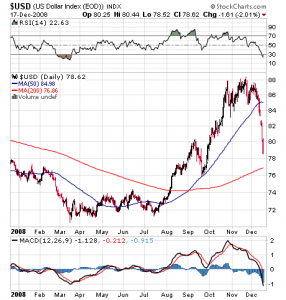The Federal Housing Finance Agency (FHFA), Fannie Mae and Freddie Mac announced the details for streamlining the mortgage modification process for homeowners in default. The new guidelines are an effort to standardize the eligibility requirements, thereby allowing the modification process to be completed more quickly. Currently, the loan modification procedure is bogged down due to understaffed loss mitigation departments and varying rules which have turned the process into a two to four month ordeal for a homeowner already under financial stress.
Fannie Mae President Herb Allison stated that the new guidelines had been established by working with the Federal Housing Finance Agency (FHFA) and numerous lenders and service providers. Mr Allison also noted that “These efforts are helping more than 10,000 delinquent borrowers every month get back on track”.
FHFA director Jim Lockhart noted that “I am pleased that our program is being rolled out right on schedule and that servicers are already working at modifying delinquent loans with the goal of keeping people in their homes”.
Loan Service Providers who administer the actual mortgage processing will attempt to notify eligible borrowers by mail of the details of the new Streamlined Modification Program (SMP).
The eligibility requirements for the SMP are as follows:
- the borrower must own and occupy the home
- the borrower is not eligible if he is presently in bankruptcy
- the borrower must be delinquent at least three months
- the borrower must have a loan to value of over 90%
- the borrower’s income must be verified
The mortgage loan will be modified so that the borrower’s total monthly payment including escrows does not exceed 38% of his gross income. To bring the ratio to 38% or lower, the term of the loan may be extended to 40 years and/or part of the principal will be allowed an interest forbearance. The interest rate on the modified loan may not be lower than 3%. Any second mortgage on the property will be left outstanding.
There has been much controversy over whether or not the loan modification programs will ultimately work out well for the borrower since the loan principal is not being reduced. As noted above, the servicer can make the borrower’s payment smaller by making a part of the principal interest free for a period of time (principal forbearance). The homeowner, however, will in many cases still owe more on his home than it is worth and the reduced mortgage payment usually only lasts for 5 years. It is therefore interesting to note that the new streamlined modification program does not allow for any type of principal forgiveness.
The loan modification process has generated a lot of controversy and criticism lately since the redefault rate was approximately 50% after 3 to 6 months. Each party involved in the process has different interests to protect and were promoting different eligibility standards. It will be very interesting to see if this new streamlined and standardized loan modification program will result in a smaller redefault rate going forward.
